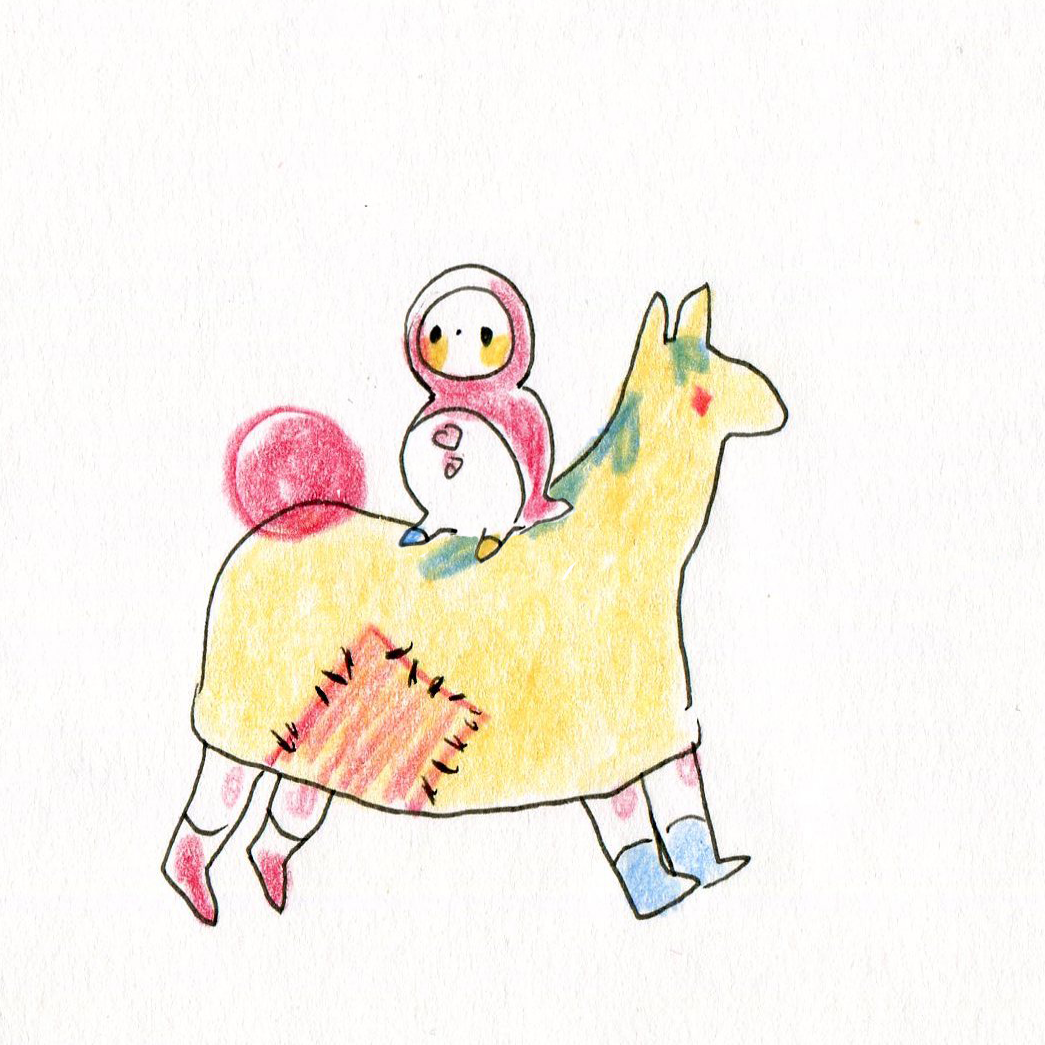Pantomime Horses: Sketches and Prototypes
Part I: Initial Concepts
Early drawing of pantomime horse done in a cafe on a nice afternoon in 2022.
My pantomime horse fondness started back around 2021, but really took off after seeing The Joffrey Ballet’s Rocinante puppet in a production of Don Quixote in 2022.
(Video below - Rocinante is at 00:18)
The making of the puppet can be read about on this fascinatingly defunct wattpad blog from 2011.
Photo by Herbert Migdoll via WFMT
Something about the Rocinante puppet and his skinny human legs, unencumbered by the big horse-pants of other Pantomime Horses, like in Monty Python, below:
Around this time, I also heard a story from my mother-in-law about a wild Halloween night she had spent running around as one half of a pantomime horse - having run into a stranger who had the costume but no partner.
What is the recipe for the perfect Pantomime Horse?
Sketches from 2021
Teapoot and a Pantomime Horse, 2023
sketches from 2024
Part II: First Three Prototypes (2023)
Three prototypes were fired to completion using Kentucky Mudworks Kota Porcelain and Amaco underglaze and fired to Cone 6 in a ConeArt 119D.
The yellow one - [#23.132] was used as the starting point for the 2024 prototypes once the new studio was set up.
March 2024: Two More Protoypes
More prototypes, this time using Scarva’s ES600 Flax Porcelain (firing range 1220°C to 1280°C).
The pieces dried without any cracks and were then underglazed in the greenware state with Amaco velvets (Amaco LUGs seem to be unavailable in the UK for the most part) then bisque fired.
As you can see in the image below, both pieces could stand and appeared to be a solid yellow.
At this point, the larger of the tests was fired at 1240°C and glazed with Scarva GZ2305 Zinc-Free Porcelain Transparent (firing range 1220°C to 1300°C)
The yellow underglaze turned out more orange than hoped for and a good deal too thin and patchy.
Due to firing without any alumina on the kiln shelf, the underglazed feet adhered to the shelf, resulting in damage (stupid mistake).
The smaller Pantomime horse was re-underglazed and then bisqued with another layer of yellow - this time pure V308 - to counteract the orange that was already there.
For the glaze firing a generous layer of alumina was wet-brushed onto the kiln shelf and the pieces were fired to a hopeful 1249°C and fired with Skutt’s slow cone 8 firing mode.
Before and after photos of the firing:
It would be sad if it weren’t so funny.
While initially I assumed the legs had warped during the firing, leading to instability and a topple, a few weeks later suddenly realized the topple likely happened before the firing even began - when I was wheeling the kiln back into place.
This hopefully means that I can continue to experiment with the more delicate legs provided they are fired in a stationary kiln.
The consequences were a slight decapitation during removal:
Was it an accident? or was it . . . murder?
On the bright side, the layer of the yellow worked out well and lead to a solid yet nicely textured appearance.
JULY 2024: Batch of Eleven (in Progress)
Concept sketches for the new batch, based on previous prototype.
The proportions were re-examined to give a more cloth-like appearance to the horse, more of a rear hump and more human-like legs.
Hoping to have to the new batch ready before the end of the year, though more testing will likely need to be done with colors and firings - will be documented further in a future post.
-goatpierrot





















